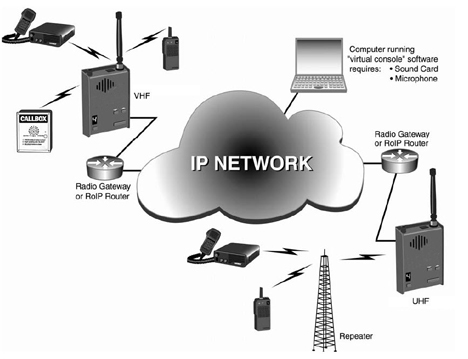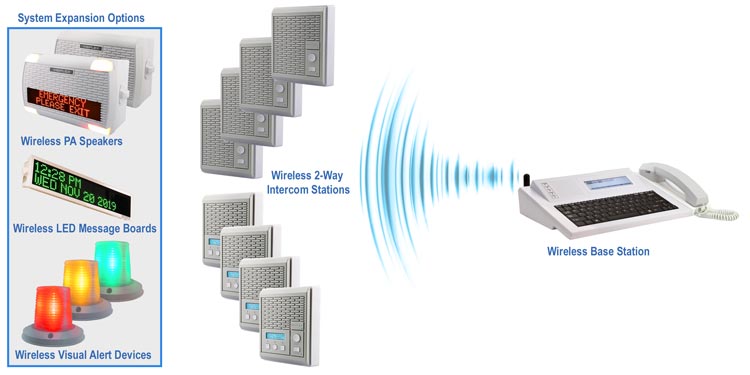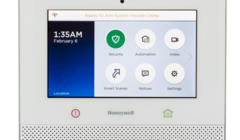
How does the wireless intercom work
Intercom systems have revolutionized the way we communicate within our homes, offices, and public spaces. But have you ever wondered how these systems work? Specifically, how does a wireless intercom operate?
A wireless intercom operates by using radio waves to transmit audio signals between multiple devices. These devices can be located in different areas or rooms, allowing for seamless communication without the need for physical wires or cables. With a wireless intercom, you can communicate with someone in another room or even in a different building altogether.
One of the key components of a wireless intercom is the base station. This is the central unit that controls the communication between the different devices. It acts as a hub, receiving and transmitting audio signals to and from the other interconnected devices. The base station also allows for additional features such as call forwarding, call waiting, and conference calling.
Each device in a wireless intercom system, whether it’s a handheld unit or a wall-mounted panel, is equipped with a built-in radio transmitter and receiver. These devices communicate with the base station using a specific radio frequency. The audio signals are converted into electrical signals, which are then transmitted as radio waves. The base station receives these radio waves, converts them back into audio signals, and then broadcasts them to the desired destination device.
Overall, a wireless intercom offers convenience, flexibility, and ease of use. Whether you need to communicate with family members in different parts of your home or coordinate with colleagues in a large office building, a wireless intercom can enhance your communication experience.
What is a Wireless Intercom?
A wireless intercom is a communication device that operates without the need for physical connections. Unlike traditional intercom systems, which often rely on wires to transmit signals, wireless intercoms use wireless technology to enable communication between different devices.
So how does a wireless intercom work? In simple terms, it uses radio waves or infrared signals to transmit audio and/or video data between different units. These units can be located within the same building or spread out across multiple locations, as long as they are within the range of the wireless intercom system.
The wireless intercom system consists of several key components, including a base station or master unit, which acts as the central hub for communication, and one or more remote units or sub-stations. The base station is usually connected to a power source and may also be connected to other devices, such as telephones or door systems, to expand its functionality.
When a user wants to initiate communication, they simply press a button or speak into a microphone on their unit. The audio or video signal is then transmitted wirelessly to the base station, which relays it to the desired unit or units. These units can be set to receive signals from specific channels or frequencies, ensuring that private and secure communication is maintained.
Wireless intercoms are used in a variety of settings, including residential homes, offices, schools, hospitals, and warehouses. They provide a convenient and efficient way for individuals to communicate with each other without the need for physical proximity. Whether it’s for security purposes, collaborative work, or simply staying connected, a wireless intercom offers a reliable means of communication that can be easily installed and operated.
Wireless Intercom vs. Traditional Intercom: The Differences
One of the key differences between wireless intercoms and traditional intercoms lies in how they work. While traditional intercoms require physical wiring to connect the various components, wireless intercoms rely on wireless communication technology to transmit audio and video signals.
Wireless intercoms use radio frequency or Wi-Fi signals to establish a connection between the master unit and the remote units. This allows for flexibility in placement, as the units can be installed in different areas without the need for wiring.
In contrast, traditional intercom systems use physical wires to connect the master unit to the remote units. These wires need to be installed in walls or ceilings, which can be a time-consuming and invasive process.
Another difference is the range of communication. Wireless intercoms can typically cover a larger area, as they are not limited by the length of physical wires. This makes them suitable for large properties or buildings with multiple floors.
Traditional intercoms, on the other hand, may have limitations in terms of range, depending on the length of the wires. They are often used in smaller properties or buildings with fewer rooms.
Additionally, wireless intercoms offer more flexibility in terms of expansion. It is easier to add more units or extend the system without the need for additional wiring. In contrast, traditional intercom systems may require rewiring or modifications to accommodate system expansion.
In conclusion, while traditional intercoms rely on physical wiring for communication, wireless intercoms utilize wireless technology, offering more flexibility, larger communication range, and easier expansion options.
Components of a Wireless Intercom System
A wireless intercom system is an essential communication device that allows individuals to communicate wirelessly within a specific area. It consists of several components that work together to facilitate seamless and efficient communication.
- Base Station: The base station serves as the control unit of the wireless intercom system. It is responsible for transmitting and receiving signals, as well as managing the overall operation of the system.
- Wireless Handsets: These portable devices enable individuals to communicate wirelessly. They can be carried around and are equipped with a microphone and speaker to facilitate two-way communication.
- Antennas: Antennas are critical components that help transmit and receive signals between the base station and wireless handsets. They ensure that communication remains uninterrupted and clear.
- Power Supply: The power supply provides the necessary electrical energy to the wireless intercom system. It can be in the form of batteries, AC adapters, or a combination of both.
- Buttons and Controls: The buttons and controls on the wireless intercom system allow users to initiate communication, adjust volume levels, and perform other functions as needed.
- Speaker and Microphone: These components enable individuals to listen and speak during communication. The speaker reproduces the sound, while the microphone captures the voice.
- Display: Some wireless intercom systems come with a display that provides visual feedback, such as caller ID, time, and other relevant information.
- Range Extender: A range extender boosts the range of the wireless intercom system, allowing communication to reach a larger area. It is especially useful in larger homes or buildings.
These components work together seamlessly to create a reliable and convenient wireless intercom system. Understanding how each component functions is essential for optimizing the performance of the system and ensuring effective communication.
Wireless Intercom Base Station
A wireless intercom base station is a critical component in a wireless intercom system. It serves as the central hub for communication and helps facilitate seamless communication across various units.
The base station acts as a control center, allowing users to initiate and receive calls within the intercom system. It connects to multiple intercom units, such as handheld radios or intercom panels, using wireless technology.
So, how does the wireless intercom base station work? The base station uses radio frequency signals to establish communication with the connected intercom units. It acts as a relay, transmitting and receiving audio signals between different units.
When a user wants to initiate a call, they can simply press a button or use a voice command on their intercom unit. The base station receives this signal and relays it to the intended recipient’s unit. The recipient can then respond, and their voice is transmitted back to the base station and routed to the calling unit.
Additionally, the base station often includes features such as an integrated speaker and microphone, which allow hands-free communication. It may also have controls for adjusting the volume, channel selection, and other settings.
The base station usually requires a power source and may be connected to a central control system or network. This allows for additional functionality, such as integrating with other communication systems or remote access for system management.
Overall, the wireless intercom base station plays a crucial role in how the intercom system works. It enables reliable and convenient communication between users and ensures that messages are transmitted efficiently throughout the system.
Wireless Intercom Handsets
In order to understand how wireless intercom systems work, it is important to first understand the role of wireless intercom handsets. These handsets are key components of the overall intercom system as they allow users to communicate with each other wirelessly.
So, how does a wireless intercom handset work?
A wireless intercom handset is essentially a portable device that consists of a microphone, a speaker, and a radio transmitter and receiver. When a user wants to communicate with another user on the intercom system, they simply press a button or use a touch screen interface on the handset to initiate a call.
Once the call is initiated, the microphone in the handset captures the user’s voice and converts it into an electrical signal. This signal is then transmitted wirelessly through the intercom system’s radio transmitter. The receiver in the handset receives the transmitted signal and converts it back into an audio signal that can be heard through the speaker.
In addition to facilitating two-way communication, wireless intercom handsets often have additional features that enhance their functionality. These features can include built-in cameras for video communication, integration with other devices such as smartphones or tablets, and compatibility with different channels or frequencies for multi-channel communication.
Overall, wireless intercom handsets play a crucial role in enabling wireless communication within an intercom system. They provide users with the ability to communicate with each other conveniently and efficiently, making them an essential component of any wireless intercom system.
Wireless Intercom Antennas
In order to understand how wireless intercom systems work, it is important to learn about the role of antennas. Antennas play a crucial role in ensuring effective communication between devices in a wireless intercom system.
Antennas are devices that transmit and receive radio signals. In the context of wireless intercoms, antennas are used to receive and transmit audio signals between different intercom units. The antennas are responsible for converting the audio signals into radio waves and then transmitting them over the air.
There are various types of antennas used in wireless intercom systems, including whip antennas, dipole antennas, and Yagi antennas. Whip antennas are the most common type and are usually seen as a long, flexible rod attached to the intercom unit. Dipole antennas consist of two wires or rods, while Yagi antennas are larger and consist of multiple rods arranged in a specific pattern.
The choice of antenna type depends on factors such as the range of communication required and the environment in which the intercom system will be used. Whip antennas are suitable for short-range communication within a building, while dipole and Yagi antennas can provide longer range communication, making them suitable for outdoor use or larger buildings.
When installing wireless intercom antennas, it is important to consider their placement. Antennas should be positioned in a way that reduces obstructions and interference, such as walls or other electronic devices. They should also be placed at a height that allows for optimal transmission and reception of signals.
In conclusion, antennas play a vital role in the functioning of wireless intercom systems. Understanding the different types of antennas and their placement is essential for ensuring reliable and efficient communication between intercom units.
Power Supply for Wireless Intercom
The power supply is a crucial component of a wireless intercom system, as it provides the necessary electricity to make the system work. Without a reliable power source, the intercom won’t function properly.
So, how does the power supply for a wireless intercom work? It typically involves the use of an AC adapter or a battery. The AC adapter is a plug-in device that converts the 110-220V AC power from the electrical outlet to the DC power required by the intercom system. This allows the intercom to be powered directly from a wall outlet.
On the other hand, some wireless intercom systems are battery-powered. These systems use rechargeable batteries that can be easily removed and replaced when they run out of power. This makes them more portable and convenient, as they can be used in locations without access to a power outlet.
Wireless intercoms also often have a backup battery feature. This means that even if the power is cut off or there is a power outage, the intercom can still function for a certain period of time using its internal battery. This ensures continuous communication even in emergency situations.
In addition to the power source, the power supply for a wireless intercom may also include voltage regulators and power conditioning circuitry. These components help maintain a stable and clean power supply, ensuring the intercom operates reliably without any interference or damage caused by fluctuations in the electrical current.
In conclusion, the power supply for a wireless intercom is essential for its operation. Whether it’s through an AC adapter or a battery, the power supply ensures that the intercom has the necessary electrical power to function properly. The inclusion of backup battery or power conditioning circuitry further enhances the reliability and functionality of the intercom system.
| – Provides a continuous power source | – Portable and can be used anywhere |
| – Easy to connect to a wall outlet | – No need for access to a power outlet |
| – Can power multiple intercom units | – Can be used during power outages |
Types of Wireless Intercom Systems
Wireless intercom systems come in various types, depending on their features and functionality. Here are the most common types of wireless intercom systems:
1. Digital Wireless Intercom: This type of intercom system uses digital technology to transmit and receive audio signals. It offers clear and secure communication, with minimal interference from other devices.
2. DECT Wireless Intercom: DECT stands for Digital Enhanced Cordless Telecommunications. DECT wireless intercom systems operate on a specific frequency range, ensuring reliable and high-quality audio communication.
3. Bluetooth Wireless Intercom: Bluetooth technology allows for short-range wireless communication between devices. Bluetooth wireless intercom systems are compact and portable, making them suitable for personal use or small-scale applications.
4. Wi-Fi Wireless Intercom: Wi-Fi intercom systems utilize a wireless network connection to transmit and receive audio signals. They offer the advantage of long-range coverage and the ability to connect multiple devices.

5. Radio Frequency (RF) Wireless Intercom: RF wireless intercom systems use radio waves to transmit and receive audio signals. They are versatile and can operate over long distances, making them suitable for large-scale applications.
Each type of wireless intercom system has its advantages and applications, making it important to choose the one that best suits your needs.
Analog Wireless Intercom
An analog wireless intercom is a communication system that operates using analog signals. It allows for wireless communication between different devices or parties, such as a master unit and multiple slave units.
The way an analog wireless intercom works is by transmitting and receiving audio signals over a specific frequency band. The master unit is typically connected to a central control panel, while the slave units are connected to individual handsets or speaker units.
When a person wants to make a call using the intercom system, they simply pick up the handset or press a button on the device. The master unit then sends out a signal to the desired slave unit, indicating that a call is being made.
The slave unit, upon receiving the signal, activates its speaker or handset, allowing for two-way communication. This allows the person making the call to speak and listen to the person on the other end of the intercom system.
Analog wireless intercom systems are typically used in environments where real-time communication is required, such as in security systems, offices, or manufacturing plants. They offer a convenient and efficient way for individuals to communicate wirelessly within a specific range.
However, analog wireless intercom systems may have limitations in terms of range and potential interference from other devices operating on the same frequency band. Additionally, the audio quality of analog systems may not be as clear as digital systems.
Overall, an analog wireless intercom works by transmitting audio signals over a specific frequency band, allowing for wireless communication between different devices or parties. It is a reliable and efficient solution for real-time communication in various settings.
Digital Wireless Intercom
A digital wireless intercom is a communication device that enables wireless communication between individuals or groups in various settings. It utilizes digital technology to transmit and receive audio signals, allowing for clear and reliable communication.
How does a digital wireless intercom work? The basic working principle involves the conversion of voice or audio signals into digital data. These digital signals are then transmitted wirelessly using radio frequency (RF) technology.
The wireless intercom system consists of several components, including:
| 1 | Wireless Intercom Units |
| 2 | Base Station |
| 3 | Antennas |
| 4 | Transceivers |
| 5 | Power Supply |
The wireless intercom units are the handheld devices used by individuals to communicate with others. Each unit is equipped with a microphone and a speaker for sending and receiving audio signals. The base station serves as the central control unit that manages the communication between the wireless intercom units.
The antennas are responsible for transmitting and receiving the RF signals. They help in establishing a strong and reliable wireless connection. The transceivers are electronic devices that facilitate the transmission and reception of digital signals.
Power supply is essential to ensure the continuous operation of the digital wireless intercom. It can be provided through batteries or an external power source.
Digital wireless intercom systems offer several advantages over traditional wired intercom systems. They provide flexibility and mobility, allowing communication to take place in any location within the wireless network’s range. They also eliminate the need for complex wiring installations, making them easy to set up and use.
In conclusion, a digital wireless intercom is a modern communication solution that utilizes digital technology to enable wireless communication. Its working principle involves converting voice signals into digital data and transmitting them wirelessly using RF technology. This technology offers flexibility, mobility, and ease of use.
Wi-Fi Intercom
A Wi-Fi intercom is a type of wireless intercom system that uses Wi-Fi technology to transmit audio and video signals. It allows users to communicate with each other over a local network or through the internet.
So, how does the Wi-Fi intercom work? When you press the talk button on the intercom device, it captures your voice and converts it into a digital signal. This signal is then transmitted over Wi-Fi to the receiving device. The receiving device receives the digital signal and converts it back into an audible voice for the recipient to hear.
One of the key advantages of a Wi-Fi intercom is its ability to connect to smartphones, tablets, and computers. This means that you can use your mobile device as a receiver and communicate with others through the intercom system. Additionally, some Wi-Fi intercoms offer video capabilities, allowing you to see the person you are communicating with.
Furthermore, a Wi-Fi intercom can be integrated with other smart home devices, such as doorbells or security cameras. This allows you to control and monitor your intercom system remotely, and even answer the door or check on your home while you are away.
In conclusion, a Wi-Fi intercom is a convenient and versatile wireless communication system that uses Wi-Fi technology to transmit audio and video signals. Its ability to connect to smartphones and other devices, as well as its integration with other smart home devices, make it a popular choice for home and office environments.
How Does a Wireless Intercom Work?
A wireless intercom system is a communication device that allows two or more people to talk to each other over a wireless connection. It uses wireless technology to transmit voice signals from one unit to another, without the need for any physical wired connection.
So, how does a wireless intercom work exactly? The process can be broken down into a few key steps:
1. Transmission: When a person speaks into the unit, the built-in microphone converts the sound waves into electrical signals. These signals are then transmitted wirelessly using a specific frequency, such as Bluetooth or Wi-Fi.
2. Reception: On the receiving end, the wireless intercom unit picks up the transmitted signals using its built-in receiver. The receiver converts the electrical signals back into sound waves, which can be heard through the unit’s speaker.
3. Duplex Communication: Most wireless intercom systems support duplex communication, which means that they can transmit and receive signals simultaneously. This allows for real-time, two-way communication between the units.
4. Encryption: To ensure security and privacy, many wireless intercom systems use encryption technology. This means that the voice signals are encoded before transmission and can only be decoded by the intended receiver.
5. Range: The range of a wireless intercom system depends on the specific model and the technology it uses. Some systems have a limited range of a few hundred feet, while others can cover larger areas, such as a multi-story building or a large outdoor space.
Overall, a wireless intercom system provides a convenient and flexible way to communicate wirelessly within a certain range. Whether used in residential or commercial settings, it offers a reliable and efficient means of communication between individuals and groups.
Advantages of Using a Wireless Intercom System
A wireless intercom system offers several advantages over traditional wired intercom systems. Here are some of the key benefits:
- Flexibility: One of the main advantages of a wireless intercom system is its portability. Unlike wired intercom systems, which require complex installation and wiring, wireless intercom systems can be easily installed and moved around as needed. This makes them ideal for temporary setups or locations where running wires is not feasible.
- Scalability: Wireless intercom systems are highly scalable, allowing users to easily add or remove intercom units as their needs change. This makes them suitable for a wide range of applications, from small residential setups to large commercial installations.
- Convenience: With a wireless intercom system, users can communicate with each other at the touch of a button, without the need to physically be in the same location. This can be especially convenient in large or multi-story buildings, where running back and forth to relay messages can be time-consuming.
- Cost-effective: Wireless intercom systems eliminate the need for expensive wiring and installation, resulting in significant cost savings. Additionally, they require less maintenance compared to wired systems, further reducing long-term costs.
- Secure and private: Many wireless intercom systems offer encryption and other security features to ensure that communications remain private and protected from unauthorized access. This is particularly important in sensitive environments, such as healthcare facilities or government buildings.
In conclusion, a wireless intercom system offers a range of advantages, including flexibility, scalability, convenience, cost-effectiveness, and security. These benefits make it a preferred choice for various applications, from residential homes to commercial buildings.
Choosing the Right Wireless Intercom System for Your Needs
When it comes to finding the perfect wireless intercom system for your needs, there are a few key factors to consider. First and foremost, it’s important to understand how an intercom system works and what features are available.
The main function of an intercom system is to provide a means of communication between two or more people in different locations. This can be especially useful in situations where wiring is not possible or practical. Wireless intercom systems use radio frequencies to transmit voice and data signals, allowing for clear and reliable communication.
One of the first things to consider when choosing a wireless intercom system is the range that it offers. Different systems will have different ranges, so it’s important to assess the size of the area you need to cover and choose a system that can accommodate that range. Some systems offer a range of up to several miles, while others may be more limited in their coverage.
Another important factor to consider is the number of units or stations that the intercom system can support. Depending on your needs, you may require a system that can support only a few units or one that can accommodate a larger number of stations. It’s important to carefully evaluate your needs and choose a system that can meet them.
Additionally, consider the features and functionality that are important to you. Some wireless intercom systems offer advanced features such as video monitoring, door release capabilities, and integration with other security systems. Make a list of the features that are most important to you and prioritize them when selecting a system.
Lastly, consider the ease of installation and use. Look for a wireless intercom system that is designed to be user-friendly and easy to set up. Ideally, the system should come with clear instructions and provide technical support if needed.
Choosing the right wireless intercom system for your needs can greatly enhance communication and convenience in your home or business. By considering factors such as range, number of units, features, and ease of use, you can select a system that meets your specific needs and provides reliable communication capabilities.
Q&A:
How does a wireless intercom system work?
A wireless intercom system uses radio waves to transmit audio signals between devices. It consists of a base station and multiple handheld units. When a person speaks into one of the handheld units, the voice is converted into an electrical signal, which is then transmitted wirelessly to the base station. The base station receives the signal and converts it back into audio, which is then played through the speaker. This allows for communication between the base station and all the handheld units.
What are the advantages of using a wireless intercom system?
There are several advantages of using a wireless intercom system. Firstly, it eliminates the need for physical wiring, which makes installation much easier and more flexible. Secondly, it allows for communication between different rooms or areas within a building without the need for running wires between them. Additionally, wireless intercom systems are portable, which means that the handheld units can be carried around and used anywhere within the range of the base station. This makes them ideal for homes, offices, and other multi-room environments.
Can a wireless intercom system be used for video communication?
Yes, some wireless intercom systems have the capability to transmit both audio and video signals. These systems are equipped with cameras and displays, allowing users to not only communicate through voice but also see each other in real-time. This can be especially useful for security purposes or for monitoring different areas of a building. However, it’s important to note that video-capable wireless intercom systems may require a more complex setup and higher bandwidth for optimal performance.
What are the range limitations of a wireless intercom system?
The range of a wireless intercom system can vary depending on the specific model and environmental factors. In general, most wireless intercom systems have a range of around 200-1000 feet indoors, and up to several miles outdoors in open areas. However, this range can be affected by obstacles such as walls, floors, and other electronic devices that may interfere with the radio signals. It’s recommended to test the range of a wireless intercom system in the specific environment where it will be used to determine its actual range.






